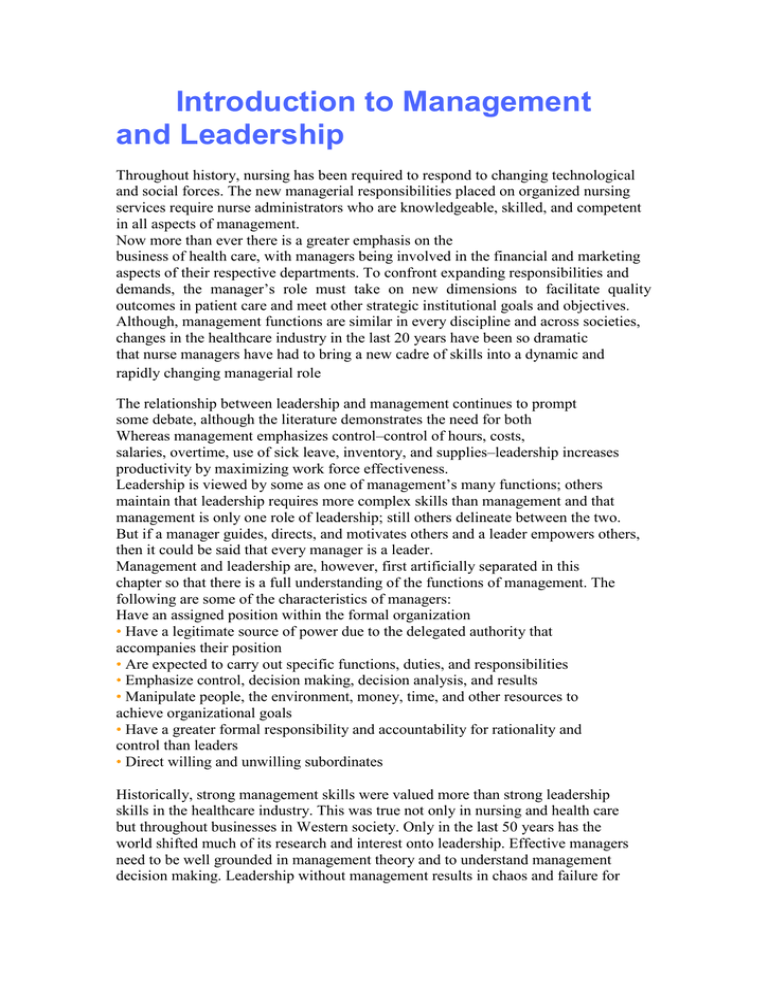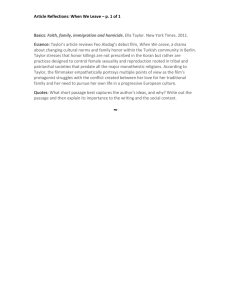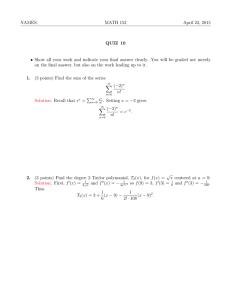Introduction to Management and Leadership
advertisement

Introduction to Management and Leadership Throughout history, nursing has been required to respond to changing technological and social forces. The new managerial responsibilities placed on organized nursing services require nurse administrators who are knowledgeable, skilled, and competent in all aspects of management. Now more than ever there is a greater emphasis on the business of health care, with managers being involved in the financial and marketing aspects of their respective departments. To confront expanding responsibilities and demands, the manager’s role must take on new dimensions to facilitate quality outcomes in patient care and meet other strategic institutional goals and objectives. Although, management functions are similar in every discipline and across societies, changes in the healthcare industry in the last 20 years have been so dramatic that nurse managers have had to bring a new cadre of skills into a dynamic and rapidly changing managerial role The relationship between leadership and management continues to prompt some debate, although the literature demonstrates the need for both Whereas management emphasizes control–control of hours, costs, salaries, overtime, use of sick leave, inventory, and supplies–leadership increases productivity by maximizing work force effectiveness. Leadership is viewed by some as one of management’s many functions; others maintain that leadership requires more complex skills than management and that management is only one role of leadership; still others delineate between the two. But if a manager guides, directs, and motivates others and a leader empowers others, then it could be said that every manager is a leader. Management and leadership are, however, first artificially separated in this chapter so that there is a full understanding of the functions of management. The following are some of the characteristics of managers: Have an assigned position within the formal organization • Have a legitimate source of power due to the delegated authority that accompanies their position • Are expected to carry out specific functions, duties, and responsibilities • Emphasize control, decision making, decision analysis, and results • Manipulate people, the environment, money, time, and other resources to achieve organizational goals • Have a greater formal responsibility and accountability for rationality and control than leaders • Direct willing and unwilling subordinates Historically, strong management skills were valued more than strong leadership skills in the healthcare industry. This was true not only in nursing and health care but throughout businesses in Western society. Only in the last 50 years has the world shifted much of its research and interest onto leadership. Effective managers need to be well grounded in management theory and to understand management decision making. Leadership without management results in chaos and failure for both the organization and the individual executive. The ultimate goal for all executives is to integrate management functions and leadership roles. This chapter will focus on providing an historical overview of management theory development and provide some tools for management decision making. Management science, like nursing, develops a theory base from many disciplines, such as business, psychology, sociology, and anthropology. Because organizations are complex and varied, theorists’ views of what successful management is and what it should be have changed repeatedly in the last 100 years. Scientific Management (1900–1930) Frederick W.Taylor, the “father of scientific management,” was a mechanical engineer in the Midvale and Bethlehem Steel plants in Pennsylvania in the late 1800s. Frustrated with what he called “systematic soldiering,” where workers achieved minimum standards doing the least amount of work possible, Taylor postulated that if workers could be taught the “one best way to accomplish a task,” productivity would increase. Borrowing a term coined by Louis Brandeis, a colleague of Taylor’s, Taylor called these principles “scientific management.” The four overriding principles of scientific management as identified by Taylor (1911) are: 1. Traditional “rule-of-thumb” means of organizing work must be replaced with scientific methods. In other words, by using time and motion studies and the expertise of experienced workers, work could be scientifically designed to promote greatest efficiency of time and energy. 2. A scientific personnel system must be established so workers can be hired, trained, and promoted based on their technical competence and abilities. Taylor thought each employee’s abilities and limitations could be identified so the worker could be best matched to the most appropriate job. 3. Workers should be able to view how they “fit” into the organization and how they contribute to overall organizational productivity. This provides common goals and a sharing of the organizational mission. One way in which Taylor thought this could be accomplished was by the use of financial incentives as a reward for work accomplished. Because Taylor viewed humans as “economic animals” motivated solely by money, workers were reimbursed according to their level of production, rather than by an hourly wage. 4. The relationship between managers and workers should be cooperative and interdependent, and the work should be shared equally. Their roles, however, were not the same. The role of managers, or “functional foremen” as they were called, was to plan, prepare, and supervise. The worker was to do the work. What was the result of scientific management? Productivity and profits rose dramatically. Organizations were provided with a rational means of harnessing the energy of the industrial revolution. Some experts have argued that Taylor was not a humanist and that his scientific principles were not in the best interest of unions or workers. However, it is important to remember the era in which Taylor did his work.During the industrial revolution, laissez-faire economics prevailed, optimism was high, and a Puritan work ethic was prevalent. Taylor maintained that he truly believed managers and workers would be satisfied if increased productivity resulted in adequate financial rewards.


